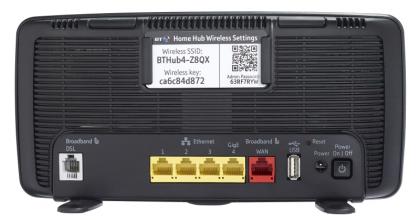NETWORKING
Choosing the Right Router for Your Home

Choosing a decent wireless router can dramatically improve the wireless connection within your home. That being said, home-owners will often stick with the free router they receive from their internet service provider (ISP).
And, more often than not, ISPs are providing home-owners with routers that cannot take full advantage of the network speeds.
Let’s take a look at the different Wi-Fi technologies and reasons you might want to upgrade your router.
Protocol/ Wi-Fi Technology
If you’ve been shopping around for routers already you’ll most likely have seen the numbers 802.11 within the product descriptions. These numbers indicate the technology within the router.
Early Wireless Standards
- 1999- 802.11b
Operating on the 2.4GHz frequency, this technology could support up to 11Mbps whilst still allowing speeds as low as 1Mpbs. When first released, there was a rapid acceptance of the technology due to faster speeds and lower price when compared to predecessor.
- 1999 – 802.11a
The ‘a’ variant of the wireless standard operated on the 5GHz band due to the 2.4GHz becoming heavily used, this led to less signal interferance.
802.11a allowed for a maximum 54Mbps data rate. Main weakness of 802.11a was the signal strength, it just couldn’t reach the distances that the ‘b’ standard could.
- 2003 – 802.11g
This third modulation standard was introduced back in 2003. It operated on the 2.4GHz frequency but had the same speed capabilities as 802.11a. It was also backwards compatible with 802.11b hardware.
Manufacturers were fast to adopt the new technology with the majority of hardware that being manufactured around this time being either ‘dual-band’ or ‘tri-mode’ meaning that devices supported the ‘a’, ‘b’ and ‘g’ variants.
The only problem with the ‘g’ technology was signal interferance as many other devices operated in the 2.4GHz frequency. Devices include microwaves, bluetooth devices and corless telephones.
Recent Wireless Standards
- 2007 – 802.11n
With a much better range than all its predecessors, 802.11n is a major advancement. Up to 100 times faster than ‘b’ and up to ten times faster than ‘a’ and ‘g’.

802.11n is a dual-band technology, so users with the compatible routers are able to have two separate networks. One on the 2.4GHz frequency and one on the 5GHz frequency.
- 2014 – 802.11ac
The latest wireless standard and one that should be considered for all home-owners who are signed up to fibre optic broadband.

802.11ac is also dual-band, operating on both the 5GHz and 2.4GHz frequencies. Dual-band is massively on the rise as users can operate devices on two separate networks in their home freeing up bandwidth.
The new BT Home Hub 5 now comes bundled with Infinity broadband packages. This router features the 802.11ac technology so that you can take full advantage of the ‘up to 76MB’ speeds.
- 2016 – 802.11ac (Next Gen)
The new BT Smart Hub comes equipped with the latest 802.11ac next gen technology, capable of sending gigabit internet round your home.

802.11ac Next Gen includes both 2.4GHz and 5GHz wi-fi bands but improves on both of them with 4×4 11a/n/ac on the 5GHz band and 3×3 11b/g/n/ac on the 2.5GHz band.
Ethernet Ports
Despite wireless technologies improving, you can’t beat the connection from a device that’s been wired into the network via an Ethernet port.

When choosing your router, be sure that there are enough Ethernet ports for your devices.
For example, many people might choose to use a wired connection for their desktop PC, games console and printer.
Single or Dual-band?
As we briefly mentioned earlier, the 802.11ac and 802.11n technologies have the ability to run on dual frequencies.
If you live in a household that operates multiple wireless devices then we would highly recommend a dual-band router. This will allow you to connect to two separate wireless networks in your home, freeing up precious bandwidth.
USB Sockets
Be sure to look out for routers with USB sockets. This will allow you to connect things such as external hard drives to the network so that you can share files such as documents, films and music with your family.
Anything Else?
We must point out that ultimately, the wireless connection in your home will only ever be as fast as the slowest part.
If you’ve upgraded your router to 802.11ac, then chances are you’re accessing the full speed provided by your ISP.
For example, if your max download speed is 15MB, then adding a router capable of 500MB won’t make any difference (unless your previous router isn’t capable of 15MB, of course). If you’re unsure about the speed of your broadband connection, take a speed test here.
If you regularly transfer files between PCs on the same network then a good router will help speed up the process.
Finally, adding a modern router will help increase the strength of your signal throughout your home. If walls are thick in your home and you still struggle to connect, even with a good router, then why not consider a Wi-Fi extender?

Take a look at our full range of 802.11ac routers here.
If you’re looking to speed up your internet connection as a whole then take a look at the latest deals from BT broadband.
